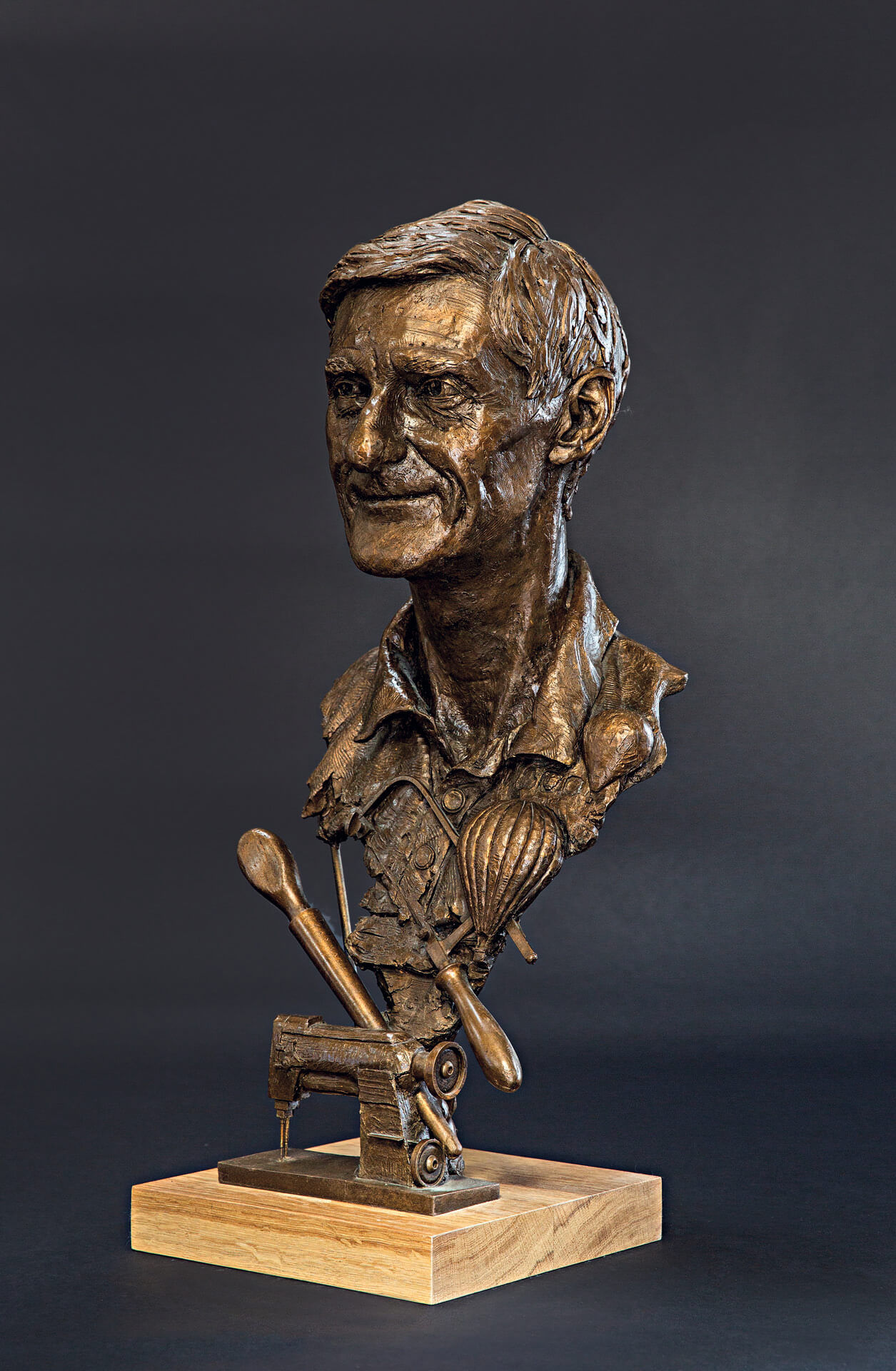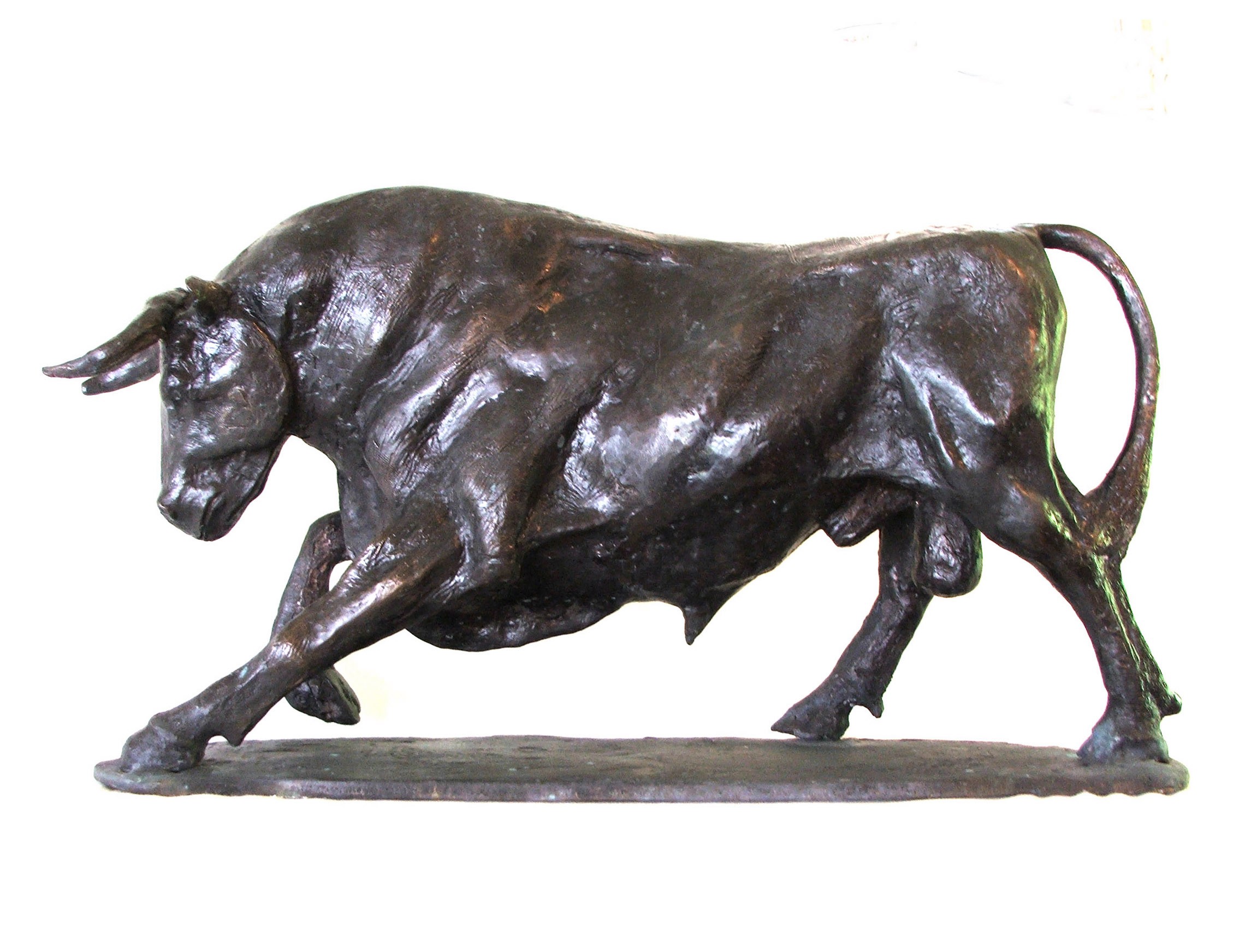The Influence of Nature in Sculpture Art
The influence of nature in sculpture art is a subject that has actually astounded musicians throughout history. Importance of natural components is one more method in which nature affects sculpture, as artists imbue their productions with the definition and organizations inherent in these elements - Robert C Hitchcock Sculptor. Eventually, sculpture art has the power to capture the transience of nature, cold a minute in time and enabling us to appreciate its beauty in perpetuity.
Organic Kinds and Shapes
Organic forms and forms, motivated by the intricate patterns and unified structures found in nature, play an essential duty in the world of sculpture art. Sculptors have actually long been astounded by the appeal and intricacy of the environment, finding ideas in the graceful contours of a seashell, the fragile flowers of a blossom, or the turning branches of a tree. By copying and extracting these natural forms, artists are able to produce sculptures that stimulate a sense of harmony and balance.
One of the reasons natural types and shapes are so widespread in sculpture art is their capacity to attach with audiences on a deep emotional degree. The environment recognizes to all of us, and when we see these kinds stood for in art, it evokes a feeling of comfort and acknowledgment. It reminds us of our location in the grand system of things and enables us to link with something better than ourselves.
In addition, organic forms and forms in sculpture art commonly personify a sense of movement and energy. The moving lines and dynamic structures simulate the constant activity and growth located in nature. This develops a sense of vitality and brings sculptures to life, making them look like if they can proceed to change and develop prior to our eyes.
Structure and Product Exploration
A significant aspect of sculpture art affected naturally is the exploration of structure and products via the usage of various strategies and mediums. Artists frequently attract inspiration from the varied textures found in the all-natural world, such as the harsh bark of a tree, the smooth surface of a pebble, or the detailed patterns on a leaf. By including these appearances right into their job, carvers can produce a tactile experience for visitors, inviting them to engage with the art work on a sensory degree.
Texture can be attained in sculpture through a range of techniques. Some musicians choose to sculpt or sculpt directly into the picked material, creating a three-dimensional surface area that mimics the textures located in nature - Robert C Hitchcock Sculptor.
Material exploration is likewise a significant component of sculpture art affected naturally. Musicians may venture into uncharted region, looking for new products that evoke the significance of the all-natural world. For instance, they may include natural environments like branches, leaves, or perhaps dirt into their sculptures, obscuring the borders in between art and the setting. Portrait Sculptor. By pressing the borders of traditional products and techniques, sculptors can develop visually spectacular and conceptually abundant works that commemorate the elegance and variety of nature.
Symbolism of Natural Environments
The incorporation of natural aspects in sculpture art adds a layer of meaning and depth to the art work. By making use of products located in nature, carvers have the ability to imbue their productions with meaning that resonates with viewers on a profound degree. Natural environments such as timber, stone, and plants have been made use of throughout history to share various symbolic messages.
Sculptures crafted from this product can evoke a feeling of connection to the earth and the cycles of life. Sculptures sculpted from stone can represent the ageless nature of certain ideas or concepts.
Flowers and plants are additionally often incorporated into sculpture art, standing for motifs of renewal, appeal, and growth. The fragile petals and lively colors of flowers can stimulate feelings of delight, while the intertwining branches of plants can represent interconnectedness and unity.
In addition to these all-natural materials, sculptors may also make use of natural environments such as wind, water, or fire to further boost the symbolic message of their art work. These components can represent the transformative power of nature, the flow of time, or the pressures that form our world.

Reflections of the Environment
Representations of the Setting can be seen in sculpture art with the consolidation of natural environments and the representation of ecological styles. Artists frequently attract inspiration from the setting, using products such as wood, rock, and even recycled materials to produce their artworks. By utilizing these natural aspects, they not just pay homage to the setting but additionally create a more powerful link in between the art work and its environments.
Along with the products used, sculpture art additionally reflects the environment with the portrayal of environmental motifs. Numerous artists select to show animals, plants, or landscapes in their job, highlighting the charm and delicacy of the environment. These sculptures function as reminders of the value of preserving our atmosphere and the need for sustainable methods.

Moreover, environmental sculptures typically intend to elevate understanding concerning pushing environmental problems. They serve as graphes of the effect of human tasks on the environment, such as logging, environment, or contamination adjustment. By illustrating these problems in their art work, carvers wish to influence audiences to act and become much more aware of their own ecological footprint.
Recording the Transience of Nature
Sculpture musicians even more discover the impact of nature by skillfully capturing the ephemeral and ever-changing aspects of the natural world. Through their artistry, these artists intend to depict the fleeting appeal and transience of nature, stimulating a feeling of wonder and contemplation in viewers.
One method which sculpture musicians catch the transience of nature is by utilizing products that are themselves based on decay and change. For instance, musicians may pick to function with natural products such as fallen leaves, flowers, or wood, which naturally weaken in time. This calculated choice highlights the impermanence of nature and advises us of the unavoidable cycle of life and fatality.
Furthermore, sculpture musicians frequently employ strategies that develop a sense of activity and fluidness in their work. By integrating moving lines and dynamic forms, they share the ever-changing nature of the environment. This can be seen in sculptures motivated by wind, water, or the development of plants, where the musician looks for to record the essence of constant activity and makeover.
In addition, some artists select to develop site-specific or temporary installations that engage with the setting. These ephemeral sculptures, made from materials such as light, ice, or sand, are deliberately made to slowly vanish or change with time. By embracing the short-term nature of their developments, artists invite audiences to review the fleeting elegance of the natural world and the impermanence of human presence.

Conclusion
To conclude, nature has an extensive influence on sculpture art. helpful resources Through the usage of natural forms and forms, musicians have the ability to stimulate a feeling of all-natural elegance and consistency. Appearance and material exploration even more enhance the connection to nature, as artists usually integrate all-natural materials right into their sculptures. Significance of all-natural elements adds deepness and suggesting to the artwork, while reflections of the setting capture the significance of nature. Inevitably, sculpture art catches the transience of nature and celebrates its everlasting impact.
Importance of all-natural elements is an additional method in which nature influences sculpture, as musicians imbue their developments with the meaning and organizations integral in these elements.A substantial aspect of sculpture art influenced by nature is the expedition of structure and products via the usage of numerous strategies and mediums (Portrait Sculptor).Material expedition is likewise a considerable part of sculpture art affected by nature.One method in which sculpture musicians capture the transience of nature is by utilizing products that are themselves subject to degeneration and adjustment. Structure and product expedition even more boost the connection to nature, as musicians often include natural products right into their sculptures